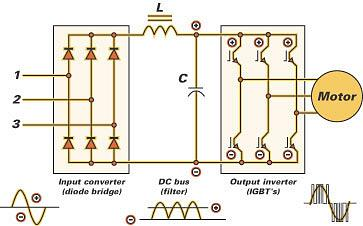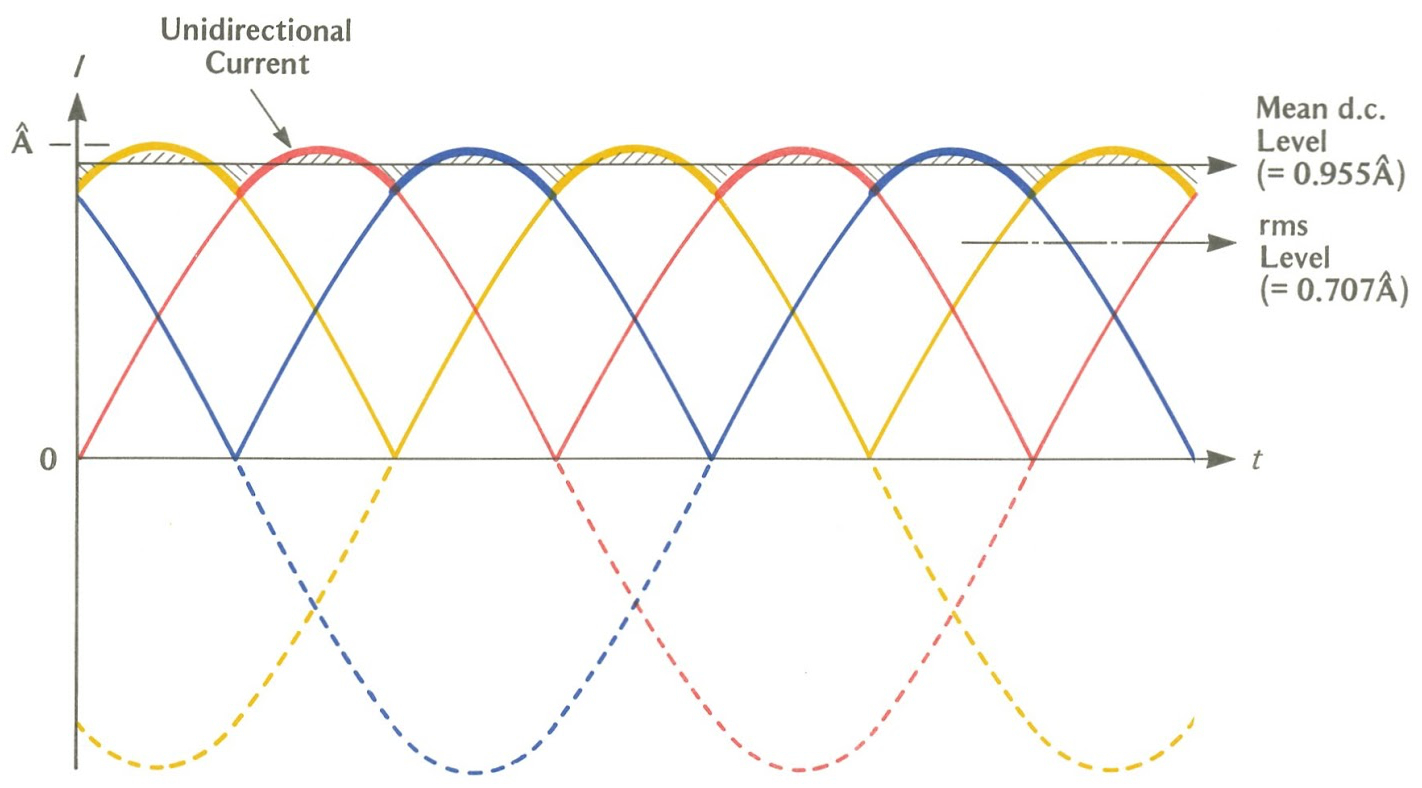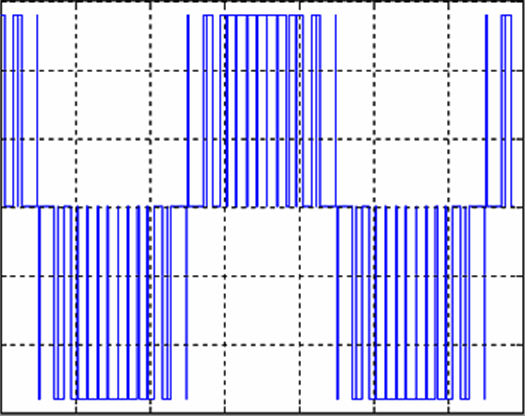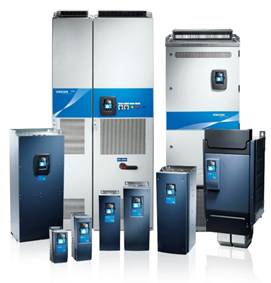Frequency converters
A typical frequency converter (FC) nowadays is a so-called voltage-source type - over 95% of all FC are voltage-source converters (VSC). This FC type has a DC-link with a capacitor bank across (see Fig.1).
 Fig.1. VSC topology.1
Fig.1. VSC topology.1
The voltage of the supply network with a constant frequency and amplitude is first rectified into DC voltage though with some ripples (Fig.2), and then it is converted into the voltage with the required frequency and amplitude (Fig. 3). Note that the voltage waveform is made of pulses of varying duration, wherein the "fundamental" voltage is sinusoidal.
 Fig.2. Rectified current in the DC link.
Fig.2. Rectified current in the DC link.
 (a)
(a)
 (b)
(b)
Fig.3. Phase voltage (a) and current (b) at the converter output (machine side).
Some FC theory can be found for example here, here and here.
FC mounting variant
Small and ligth FC are usually wall-mounted, while large and heavy are - floor-mounted. In Fig.4 the smaller dark-colored FC are for wall-mounting. The larger light-colored FC should be floor-installed. Usually FC above 250 kW can be found in floor-mounted versions only. FC can be wall mounted when powers are below 250 kW. Wall-mounted modules can be convenient in certain cases, e.g. FC can be installed into existing cubicles or when the floor is wet wall mounted design can be the only way. For some powers (usually 200...250 kW) there exists both wall-mounted & floor-mounted versions.
 Fig.4. Family of frequency converters by Vacon. 2
Fig.4. Family of frequency converters by Vacon. 2